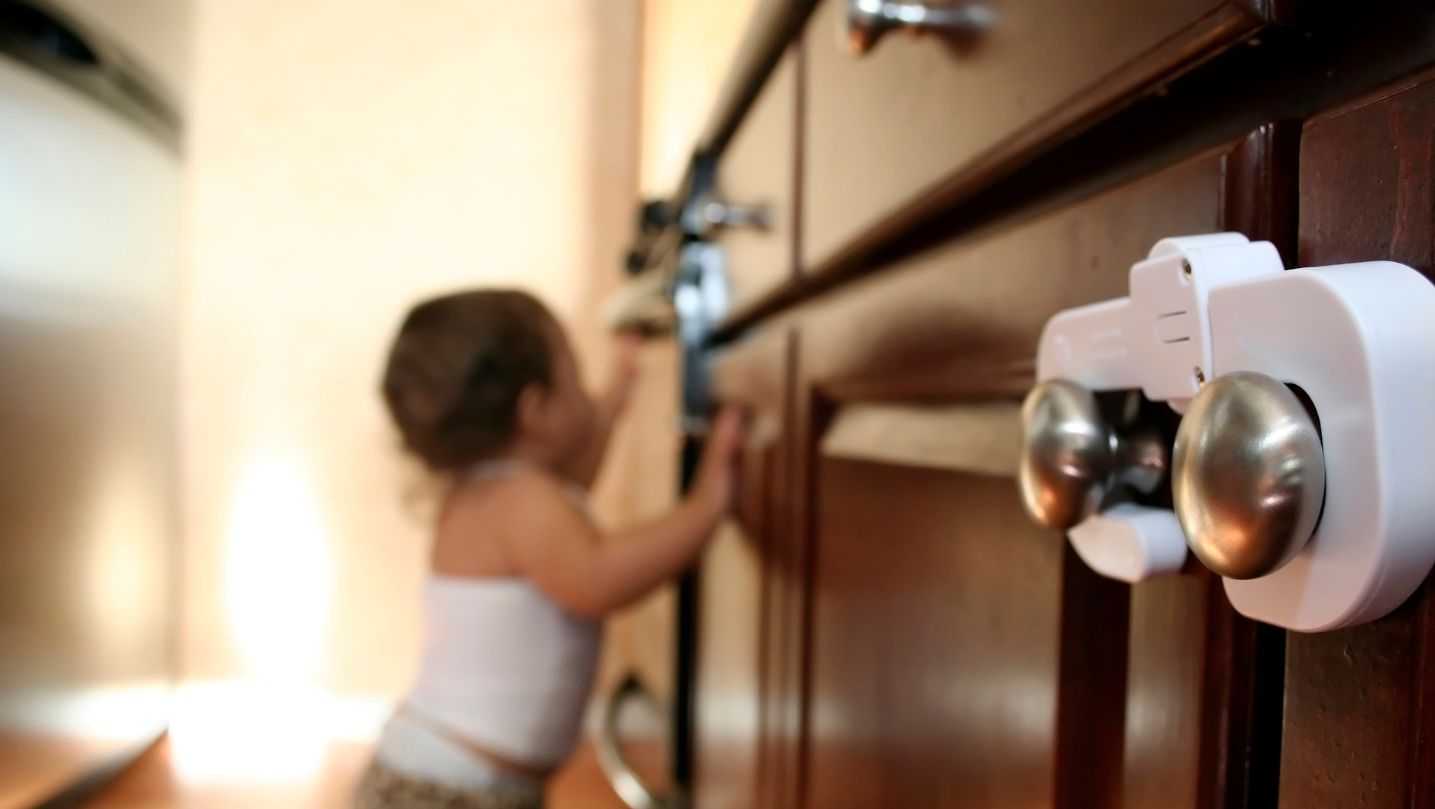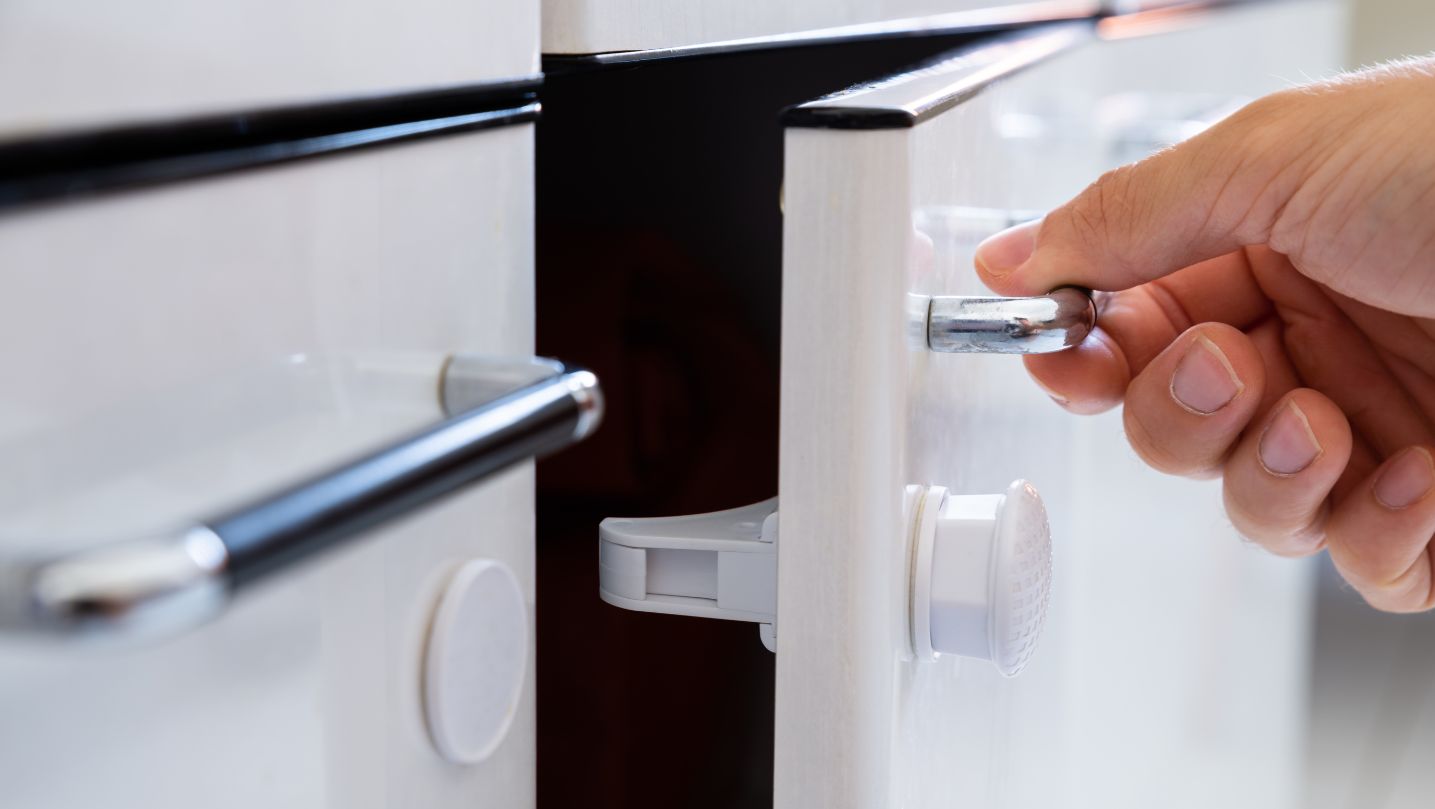
Creating a safe home for your little one is one of the most important things you can do as a parent. From sharp corners to tempting cabinets, everyday household items can pose unexpected risks to curious kids. Child-proofing isn’t just about adding locks and gates–it’s about crafting a space where your child can explore safely and thrive. In this blog, we’ll cover practical tips to help you identify hazards, make your home safer, and ensure your little one is protected at every stage.
Assessing Potential Hazards in Your Home
When it comes to child-proofing, the first step is looking at your home from your child’s perspective–literally. Get down on their level and imagine what they can see, reach, and grab. It’s surprising how many everyday items turn into potential hazards.
Room-by-Room Risk Assessment
Let’s start by breaking it down room by room.
Living Room
Look for sharp edges on coffee tables, heavy decor that can topple over, and cords dangling from blinds or electronics. These are the sneaky little things that catch curious hands.
Kitchen
This room can feel like a danger zone. Knives, appliances, cleaning products–everything needs to be out of reach or locked away. Even that adorable magnet collection on your fridge could pose a choking hazard.
Bathroom
It’s not just about locking the medicine cabinet.

Think about water safety. An inch of water in the tub is enough to cause trouble, so never leave little ones unattended.
Bedrooms
Secure heavy furniture, like dressers and bookshelves, so they won’t tip if climbed on. Keep small objects, like jewelry or coins, out of reach–anything that could fit in their mouth is fair game.
Hidden Dangers You Might Miss
Some risks are easier to overlook. Electrical outlets are an obvious one, but what about accessible windows? If your windows don’t have locks or stops, a curious child could easily lean out. Don’t forget about toxic houseplants or that one wobbly chair they’ll inevitably try to scale.
Creating a safe space takes effort, but it’s all about peace of mind. A few adjustments can make your home a lot safer for your little ones.
Essential Child-Proofing Tools and Techniques
Once you’ve identified the potential hazards, it’s time to bring in the reinforcements. Luckily, there are many affordable, easy-to-use tools to help you child-proof your home. Let’s jump into the must-haves and practical ways to use them!
Safety Devices You Can’t Skip
Here are a few staples every parent needs to keep their home safer for their children:
– Outlet Covers: Little fingers love poking into outlets, so cover them up with simple plug protectors or sliding outlet covers.
– Cabinet Locks: Kitchen and bathroom cabinets should be locked tight, especially ones that hold cleaning supplies or medications. There are adhesive options that don’t even require drilling.

– Baby Gates: If your home has stairs, baby gates are non-negotiable. They’re also great for blocking off rooms you’d rather keep off-limits.
– Corner and Edge Bumpers: For those sharp-edge coffee tables or low countertops, foam bumpers can prevent a lot of tears.
Securing Furniture and Appliances
Big furniture can be surprisingly dangerous if not secure. Invest in anti-tip brackets for heavy pieces like bookshelves, dressers, and even your TV. Kids love to climb, and these simple devices make a huge difference.
Appliances like ovens and refrigerators also need attention. Stove knob covers and oven locks are great for keeping little ones safe while you cook.
The Role of Smart Home Technology
These days, technology can lend a helping hand. Baby monitors with movement sensors are a lifesaver, especially for new parents. Smoke and carbon monoxide detectors with smart alerts can notify you via your phone if something’s wrong. Child-proofing isn’t just about baby gates and outlet covers–it’s about creating a home that grows with your child’s needs. You’ll be amazed at how much safer you feel with just a few of these simple changes!
Maintaining a Healthy Home Environment
Child-proofing isn’t just about preventing bumps and bruises; it’s also about creating a space where your child can thrive. A healthy environment is just as important as a safe one, and it doesn’t have to be complicated to achieve.
Reducing Exposure to Toxins
Let’s start with the cleaning supplies. Many traditional cleaning products are packed with harsh chemicals that can irritate your child’s skin or lungs. Switching to non-toxic or eco-friendly options is a small change with a big impact. You’ll also want to keep these products stored out of reach or behind a locked cabinet. If you live in an older home, lead paint can still be an issue. It’s worth testing and repainting if needed, especially in areas where your child might touch walls frequently.
Improving Air Quality
The air in your home matters more than you might think. Babies and young children are especially sensitive to allergens and pollutants. Consider investing in an air purifier to help keep dust, pet dander, and other irritants at bay. Also, don’t forget about your HVAC system! Regular maintenance and air filter changes not only improve air quality but also keep your home’s temperature comfortable and consistent.
Keeping Pests and Allergens Under Control
Nobody wants to think about pets, but even the cleanest homes can have occasional issues. Routine inspections can help prevent surprises, and sealing cracks or openings around windows and doors can make a big difference. Mold and dust can also be sneaky culprits. Regular cleaning, especially in humid areas like the bathroom or basement, is key to avoiding respiratory irritants. By taking these extra steps, you’re creating a home that’s not just safe but also promotes good health. After all, your child deserves a space where they can breathe easy and grow strong.
Teaching Safety to Your Children
No matter how much child-proofing you do, teaching your little ones about safety is just as important. Kids are naturally curious, and helping them understand boundaries and basic safety rules can make a big difference as they grow.
Setting Boundaries at Home
Star with clear, simple rules. For example, “The stove is hot, and we don’t touch it,” or “We only open drawers with Mommy or Daddy’s help.” Consistency is key here–repeating the same message helps it stick. Using visual cues can also be helpful. You can place stickers or tape to mark off-limits areas like cabinets or certain drawers. For toddlers, this visual reminder can reinforce your verbal guidance.
Building Awareness Through Conversations
Children may not always understand “why,” but taking the time to explain can be surprisingly effective. If your child is reaching for something dangerous, explain the consequence in simple terms: “This is sharp, and it could give you an ouchie.” Role-playing can also be fun and educational. Practice what to do in certain situations, like pretending to stop at a pretend “road” or practicing how to call for help in an emergency
Emergency Preparedness
It’s never too early to start teaching basic safety practices. Show your child how to stop, drop, and roll in case of fire, or where to meet outside during an emergency. Practice these drills regularly in a calm, non-scary way so it feels like second nature. Helping your child learn these lessons empowers them to navigate the world a little more safely. And as they get older you’ll feel more confident that they understand how to make safer choices on their own.
Conclusion
Child-proofing your home is a labor of love, but it’s one that pays off in so many ways. By identifying hazards, using the right tools, maintaining a healthy environment, and teaching your child about safety, you’re creating a space where they can explore, learn, and grow confidently. Parenthood is full of surprises, but worrying about your child’s safety doesn’t have to be one of them. Take a deep breath, tackle one room at a time, and know that these small steps are helping build a safe and healthy foundation for your family.
When it comes to child-proofing your living room, selecting furniture that is both safe and stylish can be a challenge. To find the perfect piece that fits your aesthetic while minimizing sharp corners and other hazards, you can start your search with terms like Australian coffee table and round coffee table with storage. Choosing furniture with soft edges and built-in storage helps create a clutter-free and secure environment where your family can relax and play.
Bob Duncan is the lead writer and partner on ConversationsWithBianca.com. A passionate parent, he’s always excited to dive into the conversation about anything from parenting, food & drink, travel, to gifts & more!
